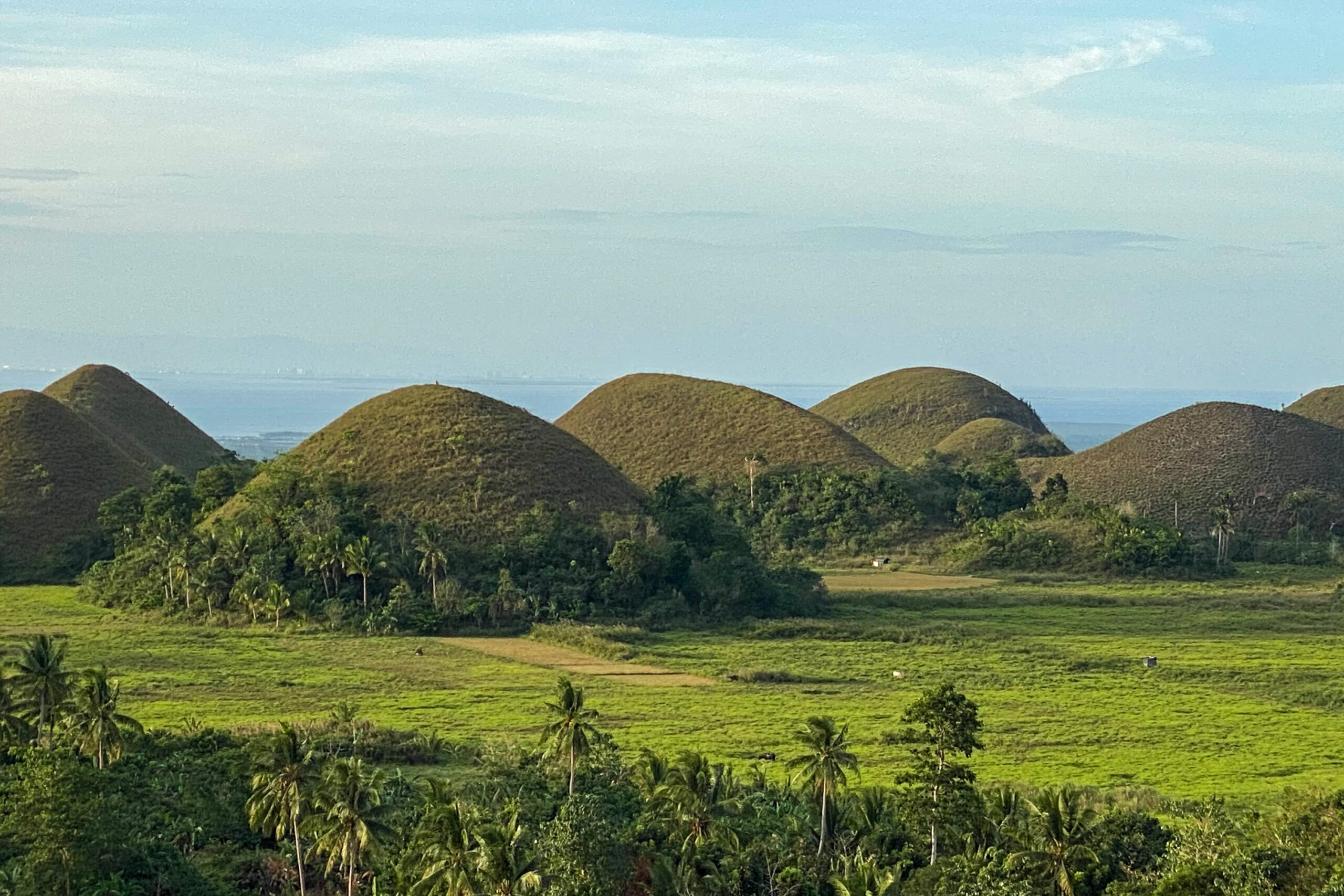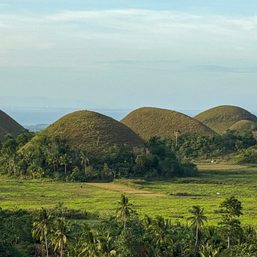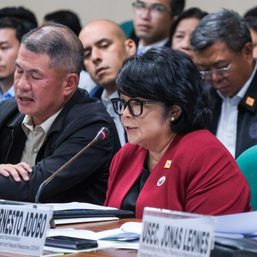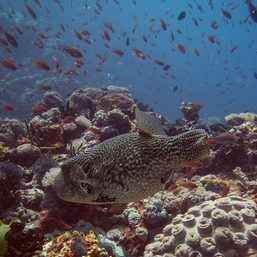SUMMARY
This is AI generated summarization, which may have errors. For context, always refer to the full article.

MANILA, Philippines – A resolution to repeal previous Protected Area Management Board (PAMB) orders that allowed structures in the Chocolate Hills Natural Monument (CHNM), is already in the works, said Department of Environment and Natural Resources (DENR) regional executive director Paquito Melicor on Monday, May 20.
A PAMB meeting attended by provincial government officials such as Bohol Governor Erico Aristotle Aumentado held last April 15 “went through a lengthy discussion” and led to the conclusion of repealing said resolutions, said Melicor during a hearing at the House of Representatives on Monday.
“A resolution was already issued…repealing those previous resolutions, especially the one in 2012,” Melicor said. “But it is still in the process of being drafted and then having signed.”
The regional director sits as the chairperson of the PAMB.
The board’s Resolution No. 5 in 2012 allowed a maximum of three structures “within 20% portion of the hill from the baseline, provided, that the design and color shall blend with the general landscape.” This 20% portion is considered the multiple-use zone.
Two other resolutions from PAMB in 2018 and 2022 endorsed the development of Captain’s Peak resort. This was the resort that went viral back in March, sparking outrage online and inquiries in both chambers of Congress.
Here’s how the controversy unfolded the past months:
Environmental group Tagbilaran Baywatch, whose spokesperson was also present in the hearing, asked for a copy of the resolution. The group had called for the demolition of the structures inside the protected area and the revocation of the resolutions that allowed these.
According to the DENR regional office’s inventory as of May 10, there are a total of 637 structures within CHNM. These structures were not confined to resorts, but included development projects from both the public and private sectors.
Here’s the breakdown:
| With PAMB endorsement and environmental compliance certificate (ECC) | 6 structures |
| With PAMB endorsement and no ECC | 60 structures |
| No PAMB endorsement and with ECC | 13 structures |
| No PAMB endorsement and no ECC | 558 structures |
In 2024, Bohol’s Provincial Environment and Natural Resources Office has so far issued 429 notices of violation against structures within the area.
Revisiting ENIPAS
In 1997, former president Fidel V. Ramos declared Chocolate Hills as a protected area through Proclamation No. 1037. It was one of the 94 protected areas covered by the Expanded National Integrated Protected Areas System Act of 2018 (E-NIPAS).
Due to the controversy, ACT-CIS Representative Erwin Tulfo called for a review of ENIPAS.
“We really have to revisit these laws, ito pong Republic Act noong 2018 which we passed,” said Tulfo on Monday. “Kailangan po nating ayusin otherwise marami pong maapektuhan na mga tao. Itong bayan ng Batuan…na pumasok pala dito sa protected area. Kailangan po nating linawin now ano na ang pupwede at hindi pupwede.”
(We really have to revisit these laws, this Republic Act in 2018 which we passed. We need to put things in order otherwise a lot of people will be affected. The town of Batuan…those that are within the protected area. We need to clarify what’s allowed and what’s not allowed.)
Tulfo said it was just “common sense” to not allow structures on the hills.
ENIPAS requires a Protected Area Management Plan for these areas, which respective PAMBs are supposed to implement.
The law defines multiple-use zone as the area where “settlement, traditional and sustainable land use including agriculture, agroforestry, extraction activities, and income generating or livelihood activities” are allowed as prescribed in the protected area’s management plan.
The DENR Central Visayas presentation during the hearing showed that according to a land classification map that dates back to 1927, 97.5% of the park was already considered alienable and disposable.
– Rappler.com
Add a comment
How does this make you feel?



















There are no comments yet. Add your comment to start the conversation.